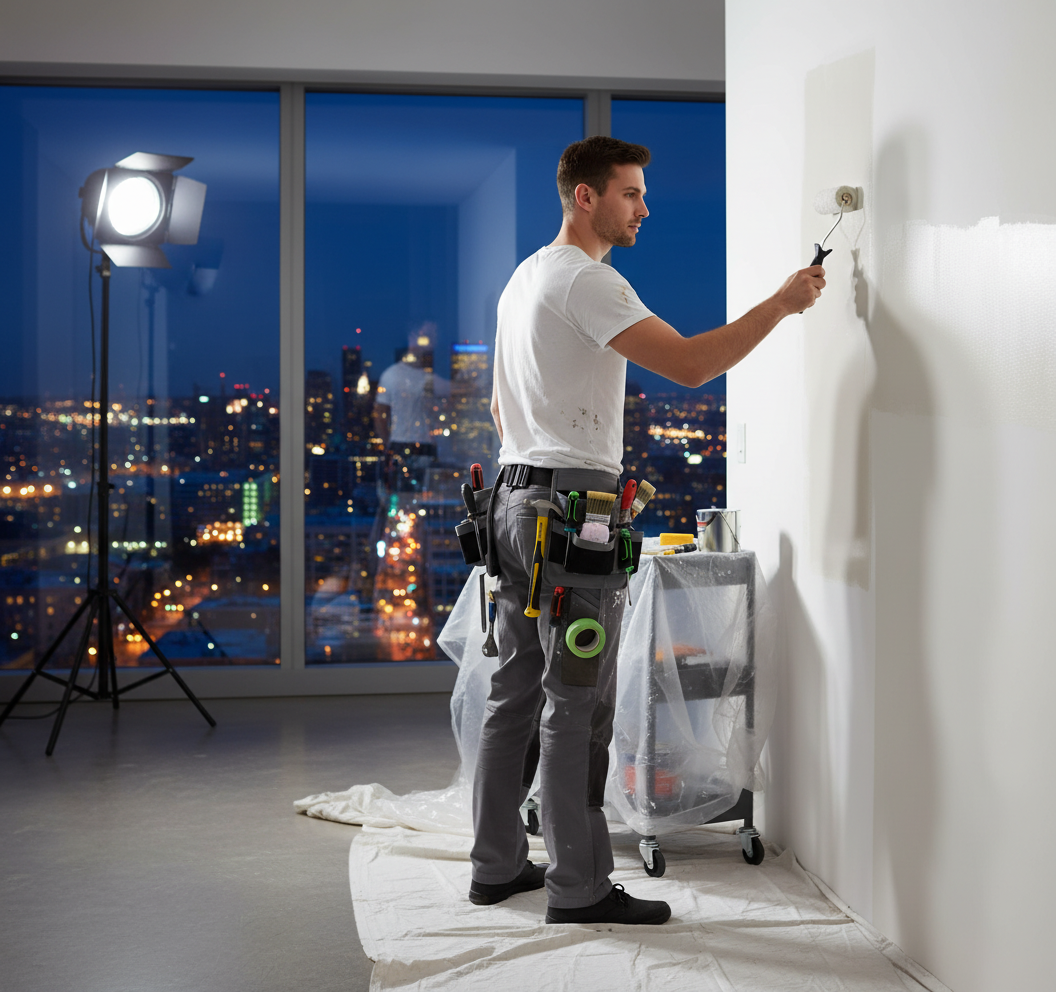Smooth, Even, Professional: The Case for Thinning Paint


Should You Thin Your Paint When Painting Your House?
When you open a fresh can of paint, the first question many homeowners ask is: “Do I need to thin this before I start painting?” The answer depends on your tools, the surface you’re painting, and the finish you want to achieve.
Why Thinning Paint Can Help
Modern paints are designed to be applied straight from the can, especially when using a brush or roller on walls and ceilings. However, there are several situations where thinning your paint offers real advantages:
1. Achieve a Smoother Finish
Thinned paint flows more evenly, which reduces visible brush strokes or roller marks. This is especially useful when painting trim, cabinets, or doors where a smooth, professional look matters.
2. Improve Surface Penetration
On porous surfaces like bare drywall, raw wood, or stucco, slightly thinned paint soaks in better, helping with adhesion and long-term durability.
3. Optimize for Spray Applications
If you’re using a paint sprayer, thinning is often required. Paint that’s too thick may clog the nozzle, while properly thinned paint sprays evenly and covers surfaces more consistently.
4. Easier Application in Hot or Dry Conditions
Paint can get thick and tacky in warmer weather, making it harder to spread. Adding a small amount of water (for latex) or paint thinner (for oil-based) keeps it workable.
5. Reduce Lap Marks
Thinned paint dries a bit slower, giving you more time to blend sections together and avoid streaks or uneven coverage.
Risks of Over-Thinning
While thinning has its benefits, it’s important not to overdo it:
- Too much thinning reduces coverage—you may need extra coats.
- It can weaken the durability and washability of the paint.
- If you thin beyond the manufacturer’s recommendations, you risk voiding the warranty or compromising performance.
Best Practices for Thinning Paint
- For walls and ceilings: Use paint straight from the can.
- For trim, doors, and furniture: Thin with 5–10% water (latex) or mineral spirits (oil-based) for smoother results.
- For sprayers: Always check the sprayer and paint manufacturer’s instructions. Most recommend thinning 5–15%.
- Always test first: Mix a small amount, try it on a surface, and adjust as needed.
The Bottom Line
Thinning your paint isn’t always necessary, but it can make a big difference in finish quality, ease of application, and spray performance. The key is moderation—start small, follow manufacturer guidelines, and adjust based on your project needs.

Ready to transform your painting journey?
Explore Further: Additional Insights and Strategies
Smooth, Even, Professional: The Case for Thinning Paint


Should You Thin Your Paint When Painting Your House?
When you open a fresh can of paint, the first question many homeowners ask is: “Do I need to thin this before I start painting?” The answer depends on your tools, the surface you’re painting, and the finish you want to achieve.
Why Thinning Paint Can Help
Modern paints are designed to be applied straight from the can, especially when using a brush or roller on walls and ceilings. However, there are several situations where thinning your paint offers real advantages:
1. Achieve a Smoother Finish
Thinned paint flows more evenly, which reduces visible brush strokes or roller marks. This is especially useful when painting trim, cabinets, or doors where a smooth, professional look matters.
2. Improve Surface Penetration
On porous surfaces like bare drywall, raw wood, or stucco, slightly thinned paint soaks in better, helping with adhesion and long-term durability.
3. Optimize for Spray Applications
If you’re using a paint sprayer, thinning is often required. Paint that’s too thick may clog the nozzle, while properly thinned paint sprays evenly and covers surfaces more consistently.
4. Easier Application in Hot or Dry Conditions
Paint can get thick and tacky in warmer weather, making it harder to spread. Adding a small amount of water (for latex) or paint thinner (for oil-based) keeps it workable.
5. Reduce Lap Marks
Thinned paint dries a bit slower, giving you more time to blend sections together and avoid streaks or uneven coverage.
Risks of Over-Thinning
While thinning has its benefits, it’s important not to overdo it:
- Too much thinning reduces coverage—you may need extra coats.
- It can weaken the durability and washability of the paint.
- If you thin beyond the manufacturer’s recommendations, you risk voiding the warranty or compromising performance.
Best Practices for Thinning Paint
- For walls and ceilings: Use paint straight from the can.
- For trim, doors, and furniture: Thin with 5–10% water (latex) or mineral spirits (oil-based) for smoother results.
- For sprayers: Always check the sprayer and paint manufacturer’s instructions. Most recommend thinning 5–15%.
- Always test first: Mix a small amount, try it on a surface, and adjust as needed.
The Bottom Line
Thinning your paint isn’t always necessary, but it can make a big difference in finish quality, ease of application, and spray performance. The key is moderation—start small, follow manufacturer guidelines, and adjust based on your project needs.
Stay Ahead of the Curve
Subscribe to our newsletter for exclusive insights, tips, and updates, and never miss out on the latest trading strategies and market trends.





